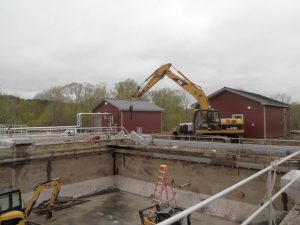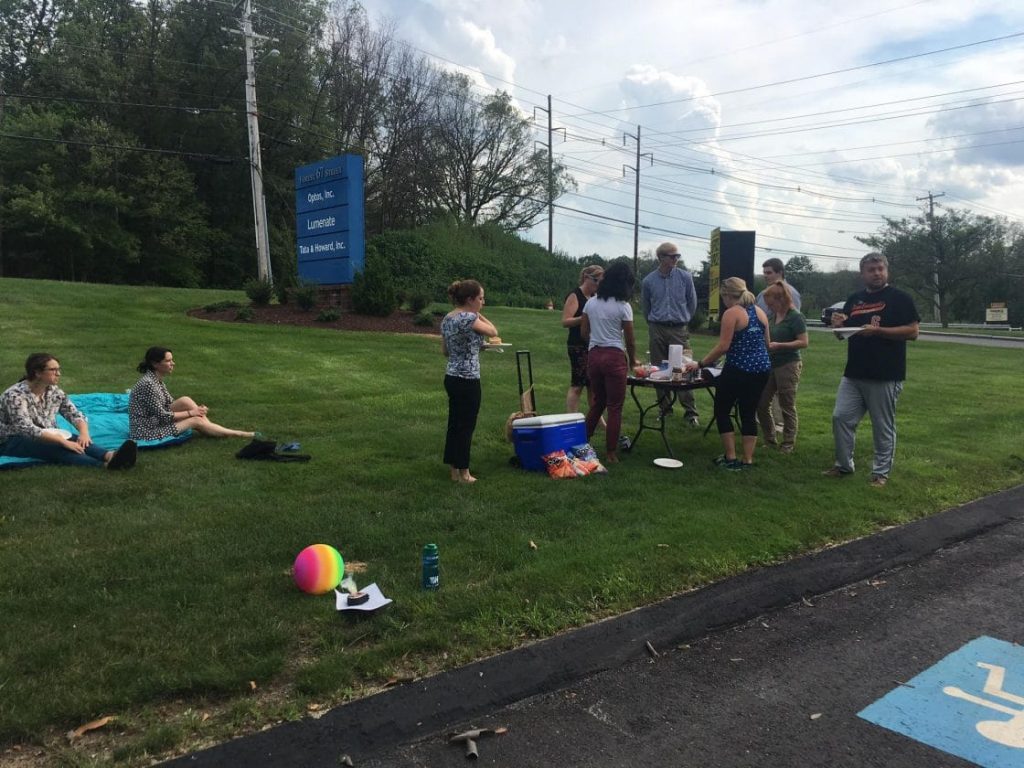
When communities grow and expand, utilities must do the same while keeping up with quality and regulatory requirements. With aging infrastructure and limited capital dollars, utilities must find alternative ways of funding crucial projects. Fortunately, several state and federal agencies realize this pressing issue and are collectively helping utilities and private organizations procure the resources they need. While making decisions on which projects and issues to be addressed first may be challenging, acquiring the capital to complete these projects is available – if you know where to look.
Drinking Water State Revolving Fund (DWSRF)

The EPA’s DWSRF can be used for infrastructure improvements in drinking water systems. The DWSRF emphasizes funding to small and economically disadvantaged communities, allowing them to finance improvements needed to comply with the Safe Drinking Water Act and to address the most serious risks to human health. The DWSRF authorizes the EPA to make grants to states each year to which each state must match 20% of its grant and develop intended use plans indicating how the allotted funds will be used. The six categories of projects that are eligible to receive DWSRF assistance include the following:
- Treatment: Projects to install or upgrade facilities to improve drinking water quality to comply with SDWA regulations.
- Transmission and Distribution: Rehabilitation, replacement, or installation of pipes to improve water pressure to safe levels or to prevent contamination caused by leaky or broken pipes.
- Source: Rehabilitation of wells or development of eligible sources to replace contaminated sources
- Storage: Installation or upgrade of finished water storage tanks to prevent microbiological contamination from entering the distribution system.
- Consolidation: Interconnecting two or more water systems.
- Creation of New Systems: Construction of a new system to serve homes with contaminated individual wells, or consolidation of existing systems into a new regional water system.
Public water systems are eligible to receive DWSRF assistance if they have the capacity to ensure compliance with the Safe Drinking Water Act or meet certain conditions to return to compliance. Systems owned by federal agencies are not eligible.
Clean Water State Revolving Fund (CWSRF)

The CWSRF program is a federal-state partnership with the EPA that provides communities a permanent, independent source of low-cost financing for a wide range of water quality infrastructure projects. The EPA provides grants to all 50 states plus Puerto Rico to capitalize state CWSRF loan programs. These programs function like environmental infrastructure banks by providing low interest loans to eligible recipients for high priority water quality activities. Projects that are eligible for DWSRF funding include the following:
CWSRF funding for public, private, and nonprofit entities:
- National Estuary Program Projects: Development and implementation of a conservation and management plan
- Nonpoint Source: Implementation of a state nonpoint source pollution management program
- Stormwater: Measures to manage, reduce, treat, or recapture stormwater or subsurface drainage water
- Decentralized Wastewater Treatment Systems: Construction, repair, or replacement of decentralized wastewater treatment systems that treat municipal wastewater or domestic sewage
- Watershed Pilot Projects: Development and implementation of watershed projects
- Security Measures at Publicly Owned Treatment Works: Measures to increase the security of publicly owned treatment works
- Water Reuse: Projects for reusing or recycling wastewater, stormwater, or subsurface drainage water
CWSRF funding for municipalities, inter-municipal, interstate, or state agencies
- Water Conservation, Efficiency, and Reuse: Measures to reduce the demand for publicly owned treatment works capacity through water conservation, efficiency, or reuse
- Construction of Publicly Owned Treatment Works: Construction of publicly owned treatment works
- Energy Efficiency: Measures to reduce the energy consumption needs for publicly owned treatment works
CWSRF funding for qualified nonprofit entities:
- Technical Assistance: Provide technical assistance to owners and operators of small and medium sized publicly owned treatment works to plan, develop, and obtain financing for CWSRF eligible projects and to assist each treatment works in achieving compliance with the CWA.
Water and Environmental Programs (WEP)
USDA Rural Development provides funding for the construction of water and waste facilities in rural communities and also provides funding to organizations that provide technical assistance and training to rural communities in relation to their water and waste activities. WEP is the only Federal program exclusively focused on water and waste infrastructure needs of rural communities with populations of 10,000 or less. WEP is administered through National Office staff in Washington, DC, and a network of field staff in each State. Types of grants offered by WEP funding include the following.
- Emergency Community Water Assistance Grants: Helps eligible communities prepare for, or recover from, an emergency that threatens the availability of safe, reliable drinking water for households and businesses. Emergencies include drought or flood; earthquake; tornado; hurricane; disease outbreak; chemical spill, leak, or seepage; or other disasters.
- Water & Waste Disposal Loan & Grant Program: Provides funding for clean and reliable drinking water systems, sanitary sewage disposal, sanitary solid waste disposal, and stormwater drainage to households and businesses in eligible rural areas. This program assists qualified applicants that are not otherwise able to obtain commercial credit on reasonable terms.
- Water & Waste Disposal Predevelopment Planning Grants: Assists low income communities with initial planning and development of an application for USDA Rural Development Water and Waste Disposal direct loan/grant and loan guarantee programs.
Community Development Block Grant (CBDG)

CDBG funds are generally used for long-term community needs, including mitigation. Beginning in 1974, the CDBG program is one of the longest continuously run programs at the Department of Housing and Urban Development (HUD). The CDBG program provides annual grants on a formula basis to 1209 general units of local government and States. Utilities can use these grants to buy, construct, or fix public facilities such as water and sewer systems. They can also match FEMA grants. Grantees may fund activities that meet urgent community development needs. CDBG funds may be allocated for many different activities including the following:
- Construction or reconstruction of water and sewer facilities, streets, and other public works
- Relocation and demolition
- Rehabilitation of public and private buildings
- Planning activities
- Activities relating to energy conservation and renewable energy resources
Public Works Program
The U.S. Economic Development Administration’s (EDA) Public Works Program helps distressed communities revitalize, expand, and upgrade their physical infrastructure. This program enables communities to attract new industry, encourage business expansion, diversify local economies, and generate or retain long-term, private-sector jobs and investment through the acquisition or development of land and infrastructure improvements needed for the successful establishment or expansion of industrial or commercial enterprises. EDA invests in public works projects, including water and sewer systems improvements, that meet the following criteria:
- The project’s demonstrated alignment with at least one of EDA’s current investment priorities
- The project’s potential to promote job creation and private investment in the regional economy
- The likelihood that the project will achieve its projected outcomes
- Ability of the applicant to successfully implement the proposed project, including financial and management
OF NOTE: Funding Programs Targeted by Trump’s FY18 Budget
 Trump’s proposed FY18 budget includes deep cuts to the nation’s major infrastructure programs. Both the DWSRF and CWSRF, funded by the EPA, are slated for drastic reduction under Trump’s budget, while the CBDG program is marked for elimination. In fact, Trump’s budget proposes to completely eliminate 66 federal programs including not only CBDG but also the United States Department of Agriculture’s Rural Water and Waste Disposal Program, and the Northern Border Regional Commission, which is a Federal-State partnership for economic and community development within the most distressed counties of Maine, New Hampshire, Vermont, and New York. Without these funding programs, some communities may not be able to implement needed system improvements.
Trump’s proposed FY18 budget includes deep cuts to the nation’s major infrastructure programs. Both the DWSRF and CWSRF, funded by the EPA, are slated for drastic reduction under Trump’s budget, while the CBDG program is marked for elimination. In fact, Trump’s budget proposes to completely eliminate 66 federal programs including not only CBDG but also the United States Department of Agriculture’s Rural Water and Waste Disposal Program, and the Northern Border Regional Commission, which is a Federal-State partnership for economic and community development within the most distressed counties of Maine, New Hampshire, Vermont, and New York. Without these funding programs, some communities may not be able to implement needed system improvements.
In Conclusion
Utilities face an uphill battle when it comes to keeping their distribution systems up to date and running efficiently. Both public and private entities are seeing the increase in demand outpacing capital, threatening crucial projects. Fortunately, state and federal funding is available to help alleviate the financial burden facing many communities, while capital efficiency planning helps communities prioritize projects. Sufficient funding and planning today can assure efficiency and deliverability for future generations.

 But team building doesn’t happen by chance; rather, it requires a concentrated effort from employee-owners at all levels in order to build and maintain positive and meaningful relationships. Because of this, Tata & Howard encourages and invests in activities that bring all of us closer together. A large part of our team building comes in the form of our Employee Stock Ownership Plan (ESOP). Since 2014, 100% of the stock in Tata & Howard has been owned by the employees, and since every member of the firm is an owner, the success of the firm becomes much more personal. Just like a football team that must work together to win championships (we might be talking about the Patriots here!), we also work together to deliver the best projects to our clients, enabling us to grow the firm.
But team building doesn’t happen by chance; rather, it requires a concentrated effort from employee-owners at all levels in order to build and maintain positive and meaningful relationships. Because of this, Tata & Howard encourages and invests in activities that bring all of us closer together. A large part of our team building comes in the form of our Employee Stock Ownership Plan (ESOP). Since 2014, 100% of the stock in Tata & Howard has been owned by the employees, and since every member of the firm is an owner, the success of the firm becomes much more personal. Just like a football team that must work together to win championships (we might be talking about the Patriots here!), we also work together to deliver the best projects to our clients, enabling us to grow the firm.


 We believe that our team is what sets us apart and what makes the firm special, and the firm of choice for innovative solutions in the water environment. From working together on innovative projects — like the recently completed
We believe that our team is what sets us apart and what makes the firm special, and the firm of choice for innovative solutions in the water environment. From working together on innovative projects — like the recently completed 




